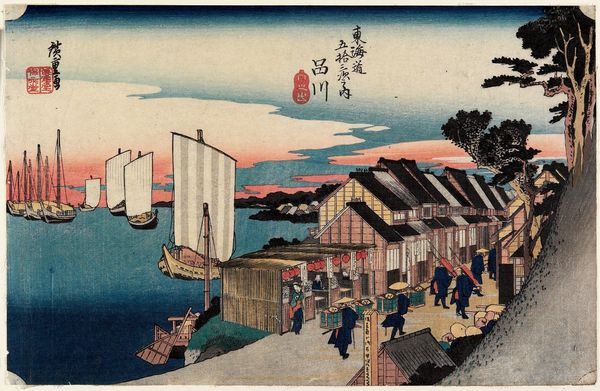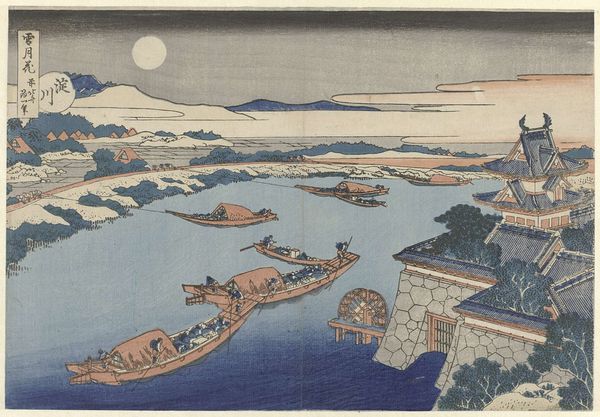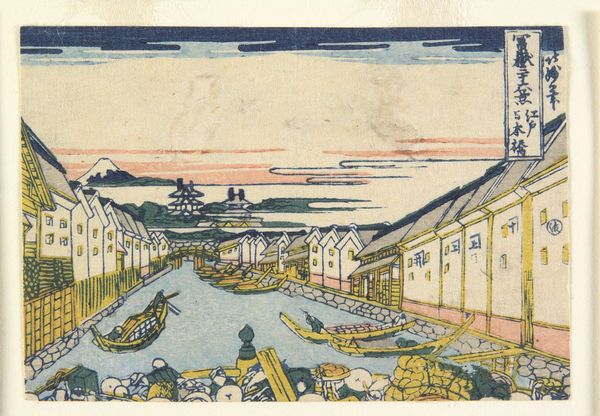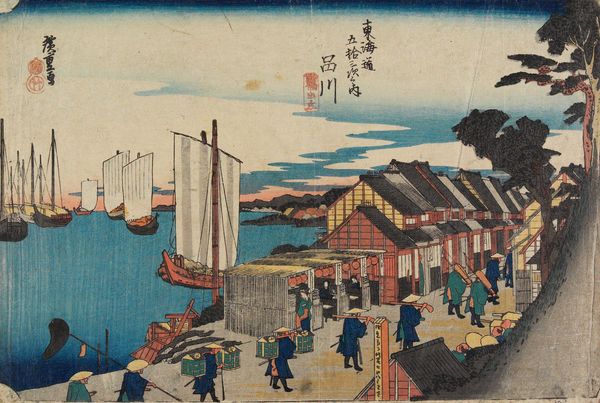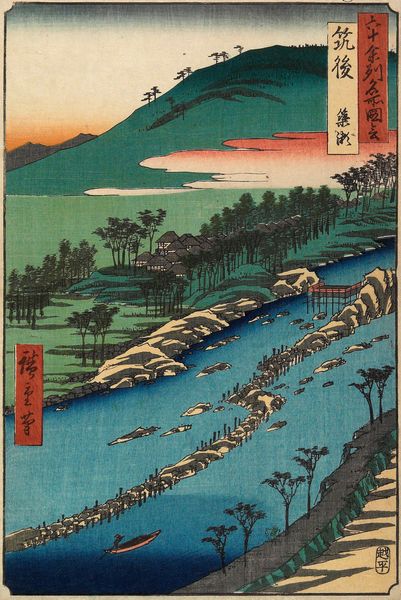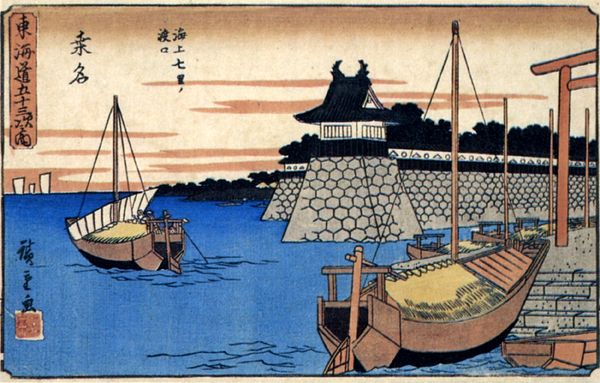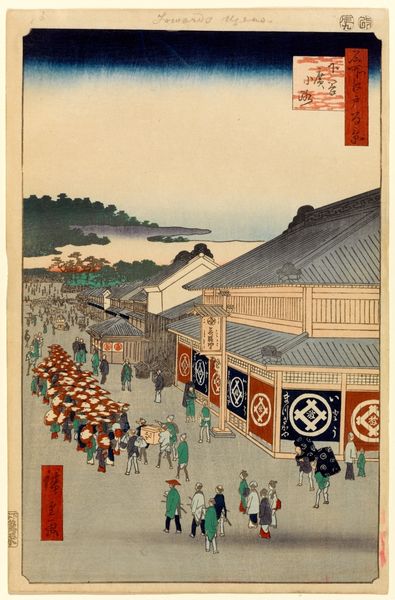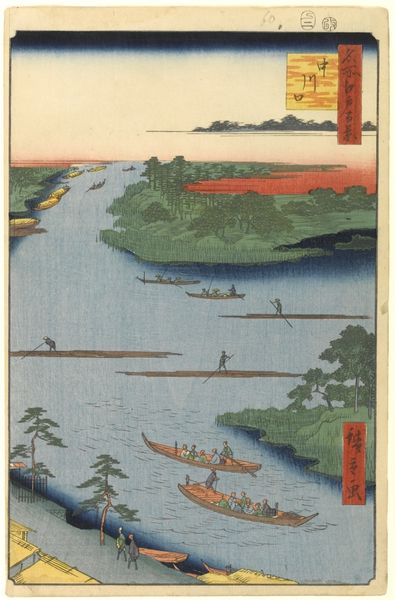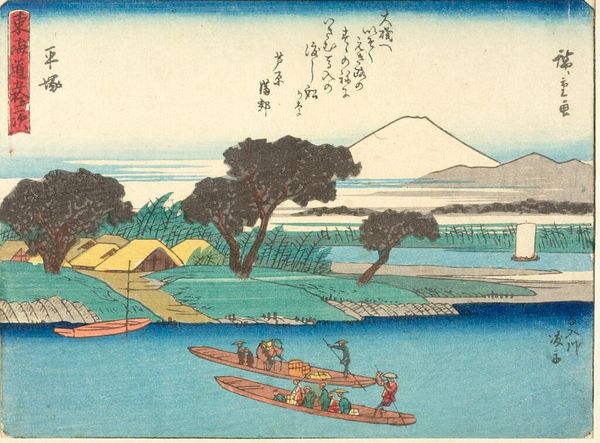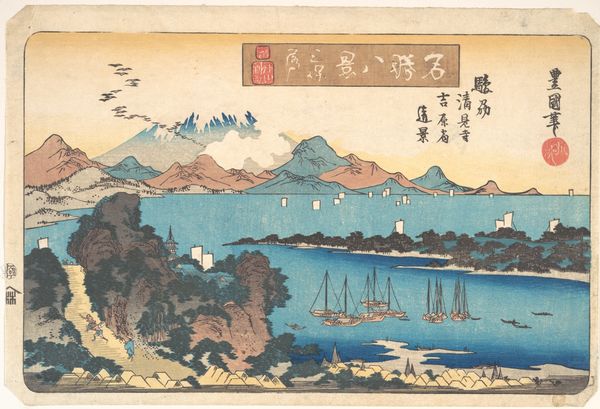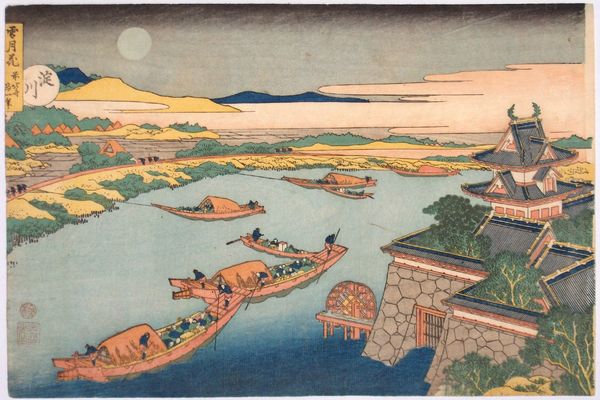
print, woodblock-print
#
portrait
# print
#
asian-art
#
landscape
#
ukiyo-e
#
woodblock-print
#
cityscape
Copyright: Public domain
Editor: So, this is "Nihonbashi bridge in Edo," a woodblock print attributed to Hokusai. It gives such a vibrant picture of daily life. There's so much happening in the foreground, and the buildings lining the canal look almost like they're marching towards the horizon! How do you read a piece like this in terms of the society it represents? Curator: Absolutely. Hokusai wasn’t just creating pretty landscapes; he was documenting and, perhaps subtly, commenting on the societal structures of Edo. The bustling foreground depicts the merchant class – think about their role in a rapidly urbanizing society and how this image acknowledges their presence. But what about the figures further off, in boats on the river? Editor: Good point! The people in boats seem to be moving things... they probably represent trade and transport? Curator: Exactly. Consider the position of Mount Fuji in the background. It is an iconic symbol, often associated with power and stability, yet here, it's almost a passive observer to the human activity unfolding below. What do you make of this contrast? Is the print merely aestheticizing labor, or is there more to unpack regarding the value ascribed to different roles in society? Editor: Hmm... it almost seems like the print subtly highlights the energy of the common people, suggesting a sort of shift in power or at least importance from tradition towards something new and dynamic. Curator: Precisely. The 'floating world' of Ukiyo-e often engaged with such socio-political currents. It allows us to consider the complexities of class, labor, and even the shifting symbolic order during this period. Editor: I see what you mean! Looking at it this way makes the print so much more than just a pretty picture. It's like a snapshot of social dynamics at a pivotal moment. Curator: Indeed. And by critically engaging with the print, we see it's an invitation to delve into deeper questions about Japanese society, labor, and cultural values of the time.
Comments
No comments
Be the first to comment and join the conversation on the ultimate creative platform.
